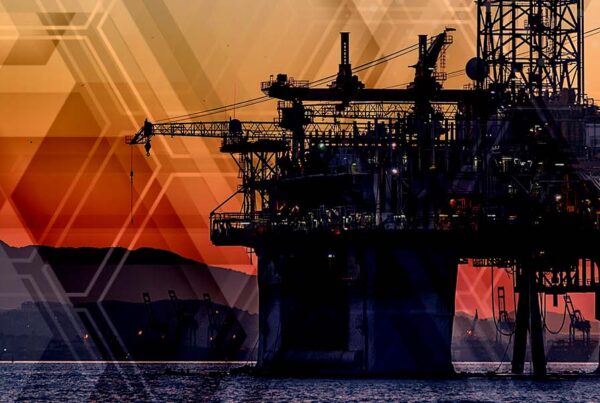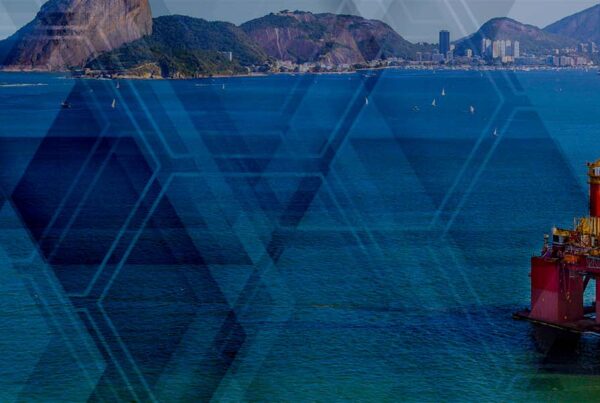In October 2025, Westwood hosted its flagship Singapore event focused on the future of offshore energy in the Asia Pacific (APAC) region. The session brought together our industry experts and guest panellists to explore macroeconomic forces, investment trends and sector-specific developments across offshore oil, gas, wind and marine markets.
Macro Trends and Investment Outlook
Despite a turbulent year for global oil markets – marked by underwhelming demand and rising supply – offshore investment is expected to remain resilient.
Between 2025 and 2029, offshore engineering, procurement, construction and installation (EPCI) investment is projected to reach $310 billion globally, with APAC accounting for 27% of this spend. Southeast Asia alone is set to award $37 billion in new offshore contracts, led by deepwater gas projects in Indonesia and emerging carbon capture and storage (CCS) initiatives in Malaysia.
Oil and gas companies – including regional NOCs – continue to prioritise decarbonisation, though the approach is evolving toward more disciplined oil and gas investment and cost efficiency. This shift is expected to drive down industry costs, even as supply chain margins remain under pressure. These macro trends are influencing not just oil and gas, but also the region’s growing offshore wind sector.

Southeast Asia Key Upstream Projects To Be Awarded
Source: Westwood PlatformLogix
Offshore Wind: Auctions Fuel Growth Beyond Mainland China
While global headlines have highlighted setbacks in offshore wind, APAC is quietly maintaining its momentum. Markets like South Korea, Japan and Taiwan are refining auction frameworks to attract investment and improve project viability.
South Korea awarded 689MW in its 2025 auction, favouring domestic turbine suppliers. Japan is reviewing its auction system and preparing new offshore wind zones, while projects in Taiwan are moving forward despite several cancellations. Projects like Fengmiao have secured final investment decisions through innovative financing and corporate power purchase agreements, and the pending Round 3.3 auction remains under development.
Westwood projects up to 43.7GW of offshore wind pipeline capacity in APAC (excluding Mainland China) by 2034. In a medium-case scenario, $61 billion is forecast in EPCI spend. Turbine sizes continue to grow, with Chinese OEMs pushing development and international expansion.
Offshore Rigs: Utilisation Strong, But New Orders Scarce
APAC’s offshore rig market remains active, with healthy utilisation rates – particularly for jackups and tender-assist rigs (TARs), which maintain levels above 85%. Between January to October 2025, 41 contract awards were recorded in the region, surpassing the total for all of 2024. While contracting activity has increased, most awards are for short-term work.
Fleet renewal continues to be a challenge, as high construction costs and relatively low dayrates have deterred newbuild orders. Jackups typically cost around $300 million to build, while drillships can exceed $1 billion, with construction timelines stretching up to three years. Financing remains a significant hurdle and instead, companies are upgrading existing rigs and improving maintenance systems to extend asset life and reduce downtime.
The region’s rig fleet comprises approximately 45 jackups, 14 semisubmersibles, nine drillships and 18 TARs. While Asia has traditionally been a hub for newbuilds, recent market dynamics have seen many newly built rigs leave the region. Only two rigs are currently cold stacked, indicating limited excess capacity.
Meanwhile, the deepwater sector is looking positive, with two new drilling programmes expected to commence in Indonesia and Malaysia in the coming months.

Newbuild Offshore Rig Orders Since 2000
Source: Westwood RigLogix
Offshore Marine: Fleet Renewal and Regional Growth
Fleet rejuvenation also remains a critical challenge across the offshore marine industry. Within the OSV segment, with limited scrapping and ageing vessels, newbuild deliveries are essential. By 2028, only about 24% of the global fleet will be younger than 15 years, and even with the current orderbook, the overall age profile shows limited improvement. Westwood estimates that $66 billion will be required across asset types to replace aging tonnage, sustain operational efficiency, and meet evolving emissions standards.
There are currently 84 active platform supply vessels (PSVs) and 449 anchor handling tug/supply vessels (AHT/S) in the APAC region, operated by key incumbents like Wintermar, HADUCO and Nam Cheong. Dayrates for offshore support vessels (OSVs) have softened from recent record highs yet continue to exceed historical average, sustained by firm utilisation levels amid tightening supply as units are redeployed out of the region.
Activities have intensified in Australia, Indonesia and Thailand, while momentum in Malaysia has moderated over recent quarters. Looking ahead however, regional offshore EPC investment is projected to rise from $2.7 billion in 2025 to $7.7 billion in 2026.
Conclusion
The APAC offshore market is navigating challenges and opportunities. From ageing fleets and cost pressures to the promise of offshore wind and deepwater gas, the region is poised to play a key role in the global energy transition.
As frameworks evolve and investment flows shift, collaboration between operators, service providers and governments will be essential to unlocking sustainable growth. Innovation in technology, financing and project execution will define the next chapter of offshore energy. As APAC continues to evolve, staying informed and engaged will be key for stakeholders across the energy value chain.
Watch the full APAC Offshore Energy Services 2025 Video on Demand, here.
Presented by Westwood’s research team:
Thom Payne, Head of Consulting
[email protected]
Hui Min Foong, Senior Analyst – Offshore Wind
[email protected]
Paul Ezekiel, Senior Analyst – Offshore Rigs
[email protected]
Chen Wei, Senior Manager – Offshore Marine
[email protected]




